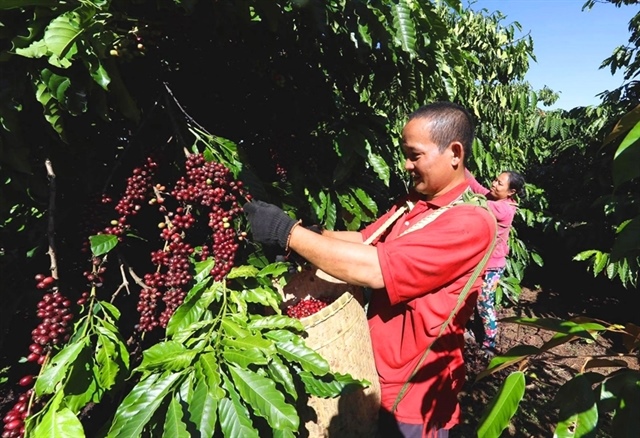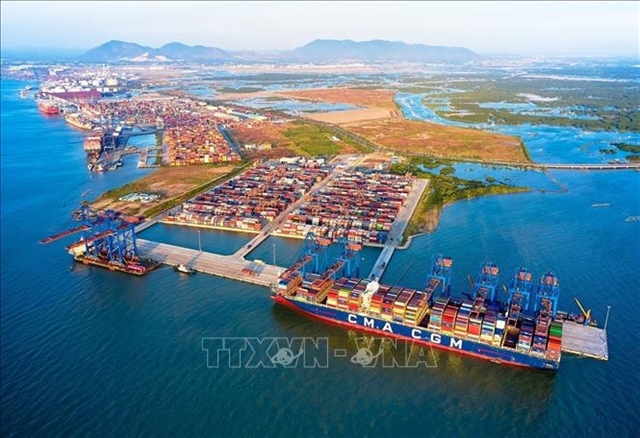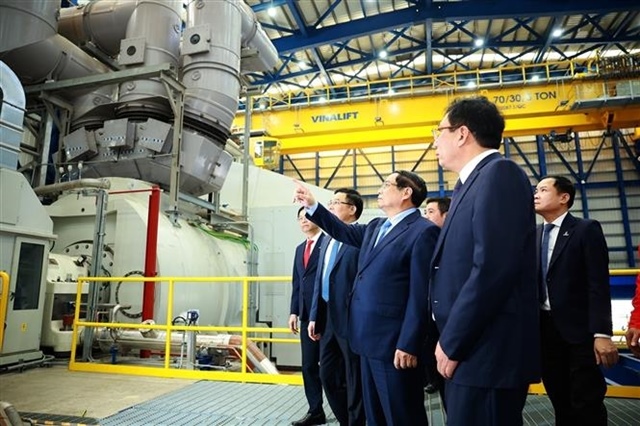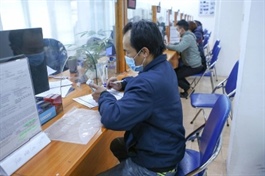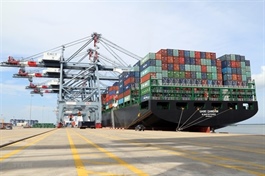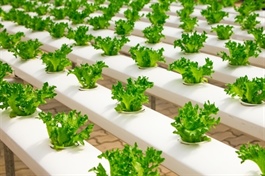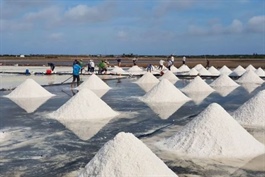Ample room to develop Vietnamese clam exports
Ample room to develop Vietnamese clam exports
As clams are one of the main aquatic products of Việt Nam and a popular product in many markets such as the Europe, the US, Japan, Malaysia and Australia, in recent years, many localities and businesses have made strong investments in sustainable production in order to achieve international certifications, creating a foundation to expand exports.
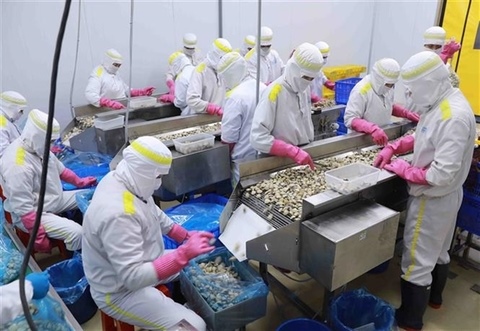
The Lenger Seafood Vietnam Co., Ltd. at the An Xá Industrial Park in the northern province of Nam Định supplies more than 8,000 tonnes of frozen clams, with revenue reaching about US$15 million a year. — VNA/VNS Photo Vũ Sinh |
According to the Vietnam Association of Seafood Exporters and Producers (VASEP), Việt Nam's bivalve mollusk export turnover in the first nine months of 2023 reached US$98 million, down 11 per cent over the same period last year. Of which, clam shipments alone reached $62 million, a fall of 19 per cent.
The top nine export markets for bivalve mollusks in the country during the period included Spain, Italy, Portugal, Japan, America, and China.
In addition, Vietnamese clam products have presented in nearly 60 markets worldwide. With the advantages of domestic production and significant potential for consumption markets, the clam industry is expected to reach new heights.
The Department of Fisheries under the Ministry of Agriculture and Rural Development said that Việt Nam has a variety of shellfish such as clams, blood cockles, snails, scallops and oysters, among others. Clams are also a key commodity that brings economic value and development potential. They are raised a lot in provinces such as Nam Định, Ninh Bình, Thanh Hóa, Bến Tre, Tiền Giang and Trà Vinh.
Many businesses are focusing on investing in technology and constantly improving quality, including Lenger Seafood Vietnam Co., Ltd.
The Dutch Lenger SeaFood Group has surveyed six clam farming provinces in Việt Nam. Realising the long-term clam farming potential of Nam Định Province, it decided to build a clam processing factory and establish Lenger Seafood Vietnam Co., Ltd. Since then, Lenger Seafood Vietnam has continuously tried and accompanied local people and authorities to promote the development of clam farming.
According to Tống Thị Lương, head of the Aquaculture Desk under the Nam Định Fisheries Sub-department, Lenger Seafood Vietnam Co., Ltd. is the first unit to invest in processing commercial clams in Nam Định province for export.
Starting from 2019, the Nam Dinh Fisheries Sub-department has worked with other units in the industry to coordinate and support Lenger Seafood Vietnam in linking with farming households in Nghĩa Hưng District to reorganise production towards sustainable clam farming.
By 2020, Lenger Seafood Vietnam's farming area was certified as the first sustainable clam farming area according to ASC standards in the world. This is a favourable condition to open new consumption markets for clams.
Lương added that Nam Định Fisheries Sub-department has accompanied and supported Lenger Vietnam in applying high technology to the production process. In addition, the two sides have jointly built a high-tech clam seed production project and a clam farming model in ponds. The company assesses that this project will help improve the quality of clam varieties from the initial production stage, minimising difficulties and risks when raising clams on tidal flats.
According to Lương, the Nam Định Fisheries Sub-Department and the Nam Định Agro-Forestry-Fisheries and Fisheries Quality Management Sub-Department have deployed monthly environmental monitoring in concentrated clam farming areas.
At the same time, they have implemented a food safety monitoring programme in collecting bivalve mollusks. From there, Lenger can choose and evaluate product quality more accurately, helping improve the sale of clam products.
Nguyễn Hồ Nguyên, general director of Lenger Vietnam Seafood Co., Ltd., said that the company is one of the first to achieve ASC certification for Vietnamese clams. Currently, Lenger Vietnam has built a 500ha clam beach, and is developing other farms to support this important certification.
The company currently exports clams mainly to the European market, with the main products being frozen, vacuum-sealed whole clams and canned clam meat. Every year, the company supplies to the market more than 8,000 tonnes of frozen clams, with revenue reaching about $15 million a year. It is expected that by 2024, export output will reach 10,000 tonnes a year, he said.
Đinh Xuân Lập, deputy director of the International Cooperation Center for Sustainable Aquaculture and Fisheries (ICAFIS) under the Vietnam Fisheries Association, said that Vietnamese clams, especially the Myratrix Lyrata white clam, have great competitiveness in the world market.
Deep-water clam farming is a great opportunity for Việt Nam to expand its area and increase organic production. Vietnamese white clams can be processed into a wider variety of products to suit the global market.


